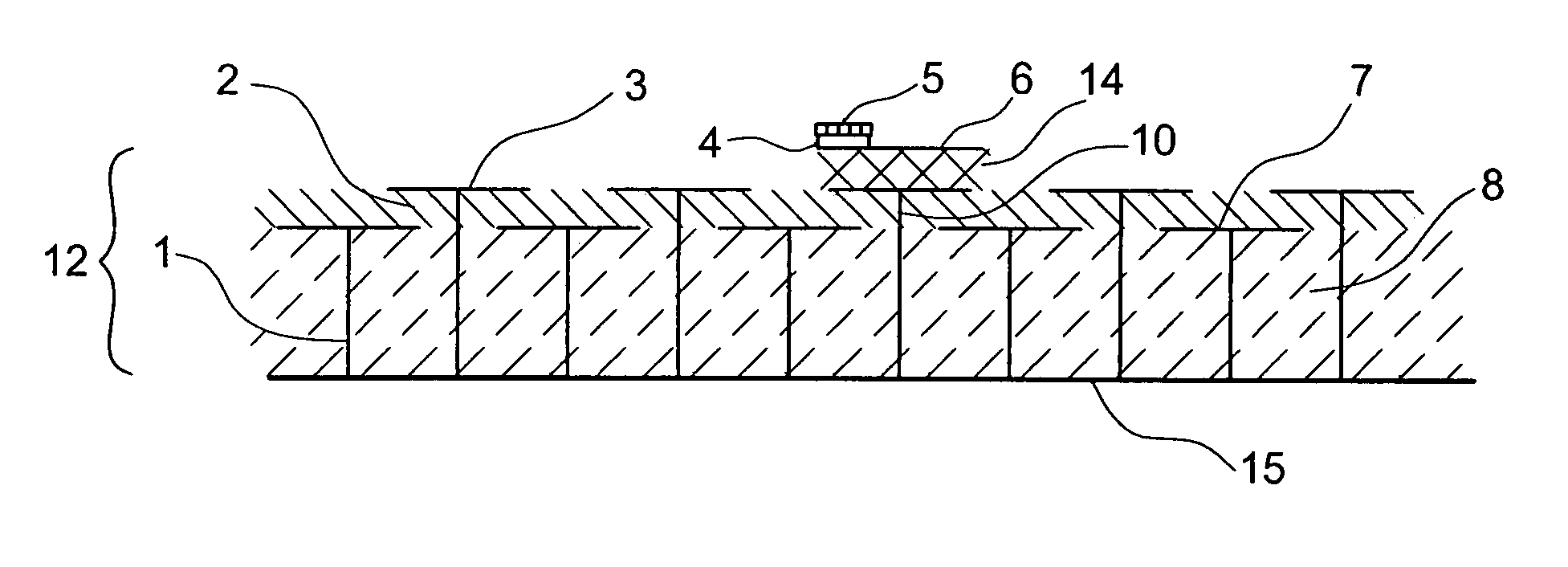RFID tag and antenna
a dipole antenna and radio frequency technology, applied in the field of rfid tags and antennas, can solve the problems of difficult to track conductive objects, radio frequency (rfid) tags with dipole antennas and may not work when attached
- Summary
- Abstract
- Description
- Claims
- Application Information
AI Technical Summary
Benefits of technology
Problems solved by technology
Method used
Image
Examples
Embodiment Construction
[0045]The present invention is useful for radio frequency identification (“RFID”) tags and their antenna systems and can be attached on conductive objects to communicate information with an RFID reader. The RFID tag may be either an active tag which has an internal power source, or a passive tag which gets its power from the electromagnetic waves emitted by the RFID reader. RFID has many applications in areas such as item identification and retail management.
[0046]FIGS. 1(a) and 1(b) show one embodiment of the present invention. An RFID chip 5 is attached to a RFID antenna 6 by anisotropic conductive adhesives (ACAs) 4. The RFID chip may be either active in generating its own power or passive in reflecting energy back to original source (the RFID reader). The RFID chip 5 and antenna 6 are mounted above an electromagnetic band gap substrate 12 with a thin layer of dielectric material 14 between them. In this embodiment, the thickness of dielectric material 14 between the substrate 12...
PUM
 Login to View More
Login to View More Abstract
Description
Claims
Application Information
 Login to View More
Login to View More - R&D
- Intellectual Property
- Life Sciences
- Materials
- Tech Scout
- Unparalleled Data Quality
- Higher Quality Content
- 60% Fewer Hallucinations
Browse by: Latest US Patents, China's latest patents, Technical Efficacy Thesaurus, Application Domain, Technology Topic, Popular Technical Reports.
© 2025 PatSnap. All rights reserved.Legal|Privacy policy|Modern Slavery Act Transparency Statement|Sitemap|About US| Contact US: help@patsnap.com



